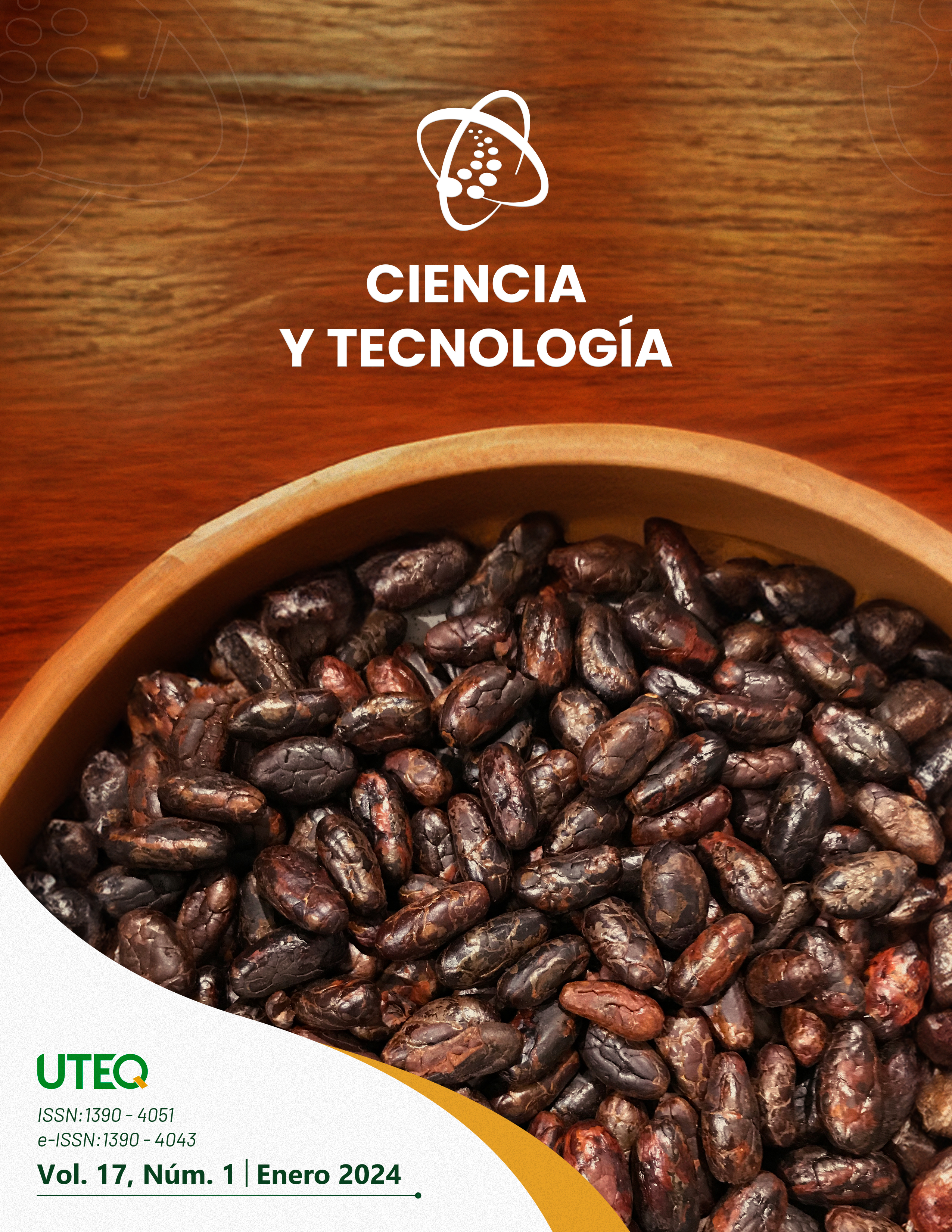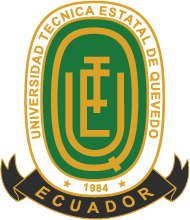Efecto de la temperatura y la radiación sobre la respuesta fisiológica del cacao (Theobroma cacao L): estrategias de mejoramiento
DOI:
https://doi.org/10.18779/cyt.v17i1.713Palabras clave:
Cacao, cambio climático, fotosíntesis, morfología, relaciones hídricasResumen
El cacao (Theobroma cacao L.), tiene su origen en la Amazonia y usualmente se cultiva bajo sombras de árboles y o a plena exposición solar. Esta variabilidad de condiciones de luz hace que las respuestas fisiológicas sean diferentes entre los cultivares de cacao. En las próximas décadas se prevé un inevitable incremento de la temperatura a nivel global. Para el año 2050, se estima que en la región tropical latinoamericana estos aumentos conllevarán a reducciones de precipitación mayores a 10%, es decir, contaremos con ambientes más secos, lo cual indudablemente afectará al cultivo de cacao. Existe incertidumbre en los posibles efectos de los cambios en la temperatura en el cacao debido a la escasa información y a los pocos cultivares que se han evaluado. La información recopilada en esta revisión sirve de base para entender las respuestas del cacao en condiciones de luz y temperatura y es innegable que se requiere más investigación para lograr una mayor comprensión de las complejidades de los cambios climáticos y sus efectos en la producción del cacao. Un aspecto que se resalta es un enfoque a investigaciones que deben ser realizados en condiciones de campo.
Descargas
Citas
Acheampong, K., Hadley, P. y Daymond, A.J. (2013). Photosynthetic activity and early growth of four cacao genotypes as influenced by different shade regimes under West African dry and wet season conditions. Experimental Agriculture. 49, 31–42. DOI: https://doi.org/10.1017/S0014479712001007
Ahenkorah, Y., Akrofi, G.S. y Adri, A.K. (1974). The end of the firstcocoa shade and manurial experiment at the cocoa research institute of Ghana. Journal. Horticultura . Science. 49: 43-51. https://doi.org/10.1080/00221589.1974.11514550
Almeida, A. y Valle, R. (2007). Ecophysiology of the cocoa tree. Brazilian Journal of Plant Physiology 19(4): 425-448. https://doi.org/10.1590/S1677-04202007000400011
Almeida, AAF. Gomes, F, Araujo, R. Santos, RC. y Valle, R. (2014). Leaf gas exchange in species of the Theobroma genus. Photosynthetica. 52(1):16–21. Doi:10.1007/s11099-013-0048-8
Alverson W. S., Whitlock, B. A., Nyffeler, R., Bayer, C. y Baum, D. A. (1999). Phylogeny of the core Malvales: evidence from ndhF sequence data. American Journal of Botany 86:1474–1486. https://doi.org/10.2307/2656928
Alvim, T. (1975). Ecophysiology of cacao In: Simposio sobre Ecoafisiolgia de cultivos tropicales Manaus, Brasil
Araque, O., Jaimez, R. E., Tezara, W., Coronel, I., Urich, R. y Espinoza, W. (2012). Comparative photosynthesis, water relations, growth and survival rates in juvenile Criollo cacao cultivars (Theobroma cacao) during dry and wet seasons. Experimental Agriculture 48:513–522. DOI: https://doi.org/10.1017/S0014479712000427
Avila-Lovera, E., Coronel, I., Jaimez, R., Urich, R., Pereyra, G. y Araque, O. (2016). Rasgos ecofisiológicos de árboles adultos de cultivares de cacao criollo (Theobroma Cacao L.) De un banco de germoplasma de venezuela Agricultura experimental, 52 (1), 137-153. doi:10.1017/S0014479714000593
Balasimha, D., Daniel, E.V. y Bhat, P.G. (1991). Influence of environmental factors on photosynthesis in cocoa trees. – Agricultural and Forest. Meteorology. 55(1-2), 15-21 https://doi.org/10.1016/0168-1923(91)90019-M
Baligar, V. C., Bunce, J. A., Bailey, B. A., Machado, R. C. y Pomella, A. W. V. (2005). Carbon dioxide and photosynthetic photon flux density effects on growth and mineral uptake of cacao. J Food Agric Environ, 3(2), 142-147 https://www.wflpublisher.com/Abstract/590
Baligar,VC, Bunce, JA, Machado ,RCR. y Elson, MK. (2008). Photosynthetic photon flux density, carbon dioxide concentration and vapour pressure deficit effects on photosynthesis in cacao seedlings. Photosynthetica 46(2):216–221. https://doi.org/10.1007/s11099-008-0035-7
Baligar, V. C., Elson, M. K., Almeida, A. A. F., de Araujo, Q. R., Ahnert, D. y He, Z. (2021). The impact of carbon dioxide concentrations and low to adequate photosynthetic photon flux density on growth, physiology and nutrient use efficiency of juvenile cacao genotypes. Agronomy, 11(2), 397. https://doi.org/10.3390/agronomy11020397
Bartley, B.G.D. (2005). Genetic diversity of cacao and its utilization. CABI, Wallingford
Black, E., Pinnington, E., Wainwright, C., Lahive, F., Quaife, T., Allan, R.P., Cook, P., Daymond, A., Hadley, P., McGuire, P.C., Verhoef, A. y Vidale, P.L. (2021). Cocoa plant productivity in West Africa under climate change: a modelling and experimental study. Environ. Res. Lett. 16, 014009. DOI: 10.1088/1748-9326/abc3f3
Cohen, I., Zandalinas, S.I., Huck, C., Fritschi, F.B. y Mittler, R. (2021). Meta-analysis of drought and heat stress combination impact on crop yield and yield components. Physiol. Plant. 171, 66–76. https://doi.org/10.1111/ppl.13203
Daymond, A.J. y Hadley, P. (2004). The effects of temperature and light integral on early vegetative growth and chlorophyll fluorescence of four contrasting genotypes of cacao (Theobroma cacao). Annals of Applied Biology, 145(3), 257–262. https://doi.org/10.1111/j.1744-7348.2004.tb00381.x
Daymond, A.J. y Hadley, P. (2008). Differential effects of temperature on fruit development and bean quality of contrasting genotypes of cacao (Theobroma cacao). Annual. Appl. Biology. 153, 175–185. https://doi.org/10.1111/j.1744-7348.2008.00246.x
Daymond, A. J., Tricker, P. J. y Hadley, P. (2011). Genotypic variation in photosynthesis in cacao is correlated with stomatal conductance and leaf nitrogen. Biologia Plantarum 55:99–104. https://doi.org/10.1007/s10535-011-0013-y
De Almeida, J., Tezara, W. y Herrera, A. (2016). Physiological responses to drought and experimental water deficit and waterlogging of four clones of cacao (Theobroma cacao L.) selected for cultivation in Venezuela. Agric. Water Management. 171, 80–88. https://doi.org/10.1016/j.agwat.2016.03.012
De Araujo, RP, de Almeida ,AAF, Barroso, JP, de Oliveira, RA, Gomes ,FP, Ahnert D, y otros. (2017). Molecular and morphophysiological responses cocoa leaves with different concentrations of anthocyanin to variations in light levels. Scientia Horticulturae 224:188–97. https://doi.org/10.1016/j.scienta.2017.06.008
Dusenge, M.E., Duarte, A.G. y Way, D.A. (2019). Plant carbon metabolism and climate change: elevated CO2 and temperature impacts on photosynthesis, photorespiration and respiration. New Phytol. 221, 32–49. https://doi.org/10.1111/nph.15283
Dzandu, E., Enu-Kwesi, L., Markwei, C.M. y Ayeh, K.O. (2021). Screening for drought tolerance potential of nine cocoa (Theobroma cacao L.) genotypes from Ghana. Heliyon 7(11), e08389. https://doi.org/10.1016/j.heliyon.2021.e08389
Fernández, M. y Gyenge, J. (2010). Técnicas en medición en ecofisiología vegetal : conceptos y
procedimientos / editores :. – Buenos Aires : Ediciones INTA, 2010. 140 p. :
Galyuon, I. K. A., McDavid, C. R., Lopez, F. B. y Spence, J. A. (1996). The effect of irradiance level on cocoa (Theobroma cacao L.): II. Gas exchange and chlorophyll fluorescence. Tropical agriculture, 73(1). https://journals.sta.uwi.edu/ojs/index.php/ta/article/view/2538
Grossiord, C., Buckley, T.N., Cernusak, L.A., Novick, K.A., Poulter, B., Siegwolf, R.T.W., Sperry, J.S. y McDowell, N.G. (2020). Plant responses to rising vapor pressure deficit. New Phytol. 226, 1550–1566. https://doi.org/10.1111/nph.16485
Hadley, P., Acheampong, K., Pearson, S., End, M.J. y Wieb, H. (1994). The effects of environmental factors on cherelle wilt in cocoa grown in controlled environments. In: Proceedings of the 11th International Cocoa Research Conference. pp. 661–666.
Hatfield, J.L. y Prueger, J.H. (2015). Temperature extremes: Effect on plant growth and development. Weather Clim. Extrem. 10, 4–10. https://doi.org/10.1016/j.wace.2015.08.001
Hebbar, K.B., Apshara, E., Chandran, K.P. y Prasad Vara, P. V. (2020). Effect of elevated CO2, high temperature, and water deficit on growth, photosynthesis, and whole plant water use efficiency of cocoa (Theobroma cacao L.). Int. J. Biometeorol. 64, 47–57.
Hutchins, A., Tamargo, A., Bailey, C. y Kim, Y. (2015). Assessment of climate change impacts on cocoa production and approaches to adaptation and mitigation: A contextual view of Ghana and Costa Rica ICCO 2021, Quartely Bulletin of Cocoa Statistics, Vol. XLVII, No. 2, Cocoa year 2021-21
IDEAM. Atlas Climatológico de Colombia. (2020). Available online: http://www.ideam.gov.co
IPCC (2021) Cambio climatico 2021. Bases físicas. Contribución del Grupo de Trabajo I al Sexto Informe de Evaluación del Grupo Intergubernamental de Expertos sobre el Cambio Climático. IPCC: www.ipcc.ch
Jaimez, R. E., Araque, O., Guzman, D., Mora, A., Espinoza, W. y Tezara, W. (2013). Agroforestry systems of timber species and cacao: survival and growth during the early stages. Journal of Agriculture and Rural Development in the Tropics and Subtropics (JARTS), 114(1), 1-11. : http://nbn-resolving.de/urn:nbn:de:hebis:34-2012112642171
Jaimez, R.E., Amores, F., Vasco, A., Gastón, R., Tarqui, O., Quijano, G., Jimenez, J. y Tezara W. (2018). Photosynthetic response to low and high light of cacao growing without shade in an area of low evaporative demand. Acta Biologica Colombiana 23:95_103 https://doi.org/10.15446/abc.v23n1.64962
Jaimez RE, Barragan, L., Fernández-Niño, M., Wessjohann, LA., Cedeño-Garcia, G., Sotomayor Cantos, I. y Arteaga, F. (2022). Theobroma cacao L. cultivar CCN 51: a comprehensive review on origin, genetics, sensory properties, production dynamics, and physiological aspects. PeerJ 9:e12676 https://doi.org/10.7717/peerj.12676
Juby, B., Minimol, J.S., Suma, B., Santhoshkumar, A.V., Jiji, J. y Panchami, P.S. (2021). Drought mitigation in cocoa (Theobroma cacao L.) through developing tolerant hybrids. BMC Plant Biol. 21, 1–12. https://doi.org/10.1186/s12870-021-03352-4
Kizildeniz, T., Pascual, I., Irigoyen, J.J. y Fermín, M., (2021). Future CO2, warming and water deficit impact white and red Tempranillo grapevine: Photosynthetic acclimation to elevated CO2 and biomass allocation. Physiol. Plant. 172, 1779–1794. https://doi.org/10.1111/ppl.13388
Lahive, F., Hadley, P. y Daymond, A.J. (2018). The impact of elevated CO2 and water deficit stress on growth and photosynthesis of juvenile cacao (Theobroma cacao L.). Photosynthetica, 56(3), 911-920. https://doi.org/10.1007/s11099-017-0743-y
Medina, V. y Laliberte, B. (2017). A review of research on the effects of drought and temperature stress and increased CO2 on Theobroma cacao L., and the role of genetic diversity to address climate change. https://alliancebioversityciat.org/publications-data/review-research-effects-drought-and-temperature-stress-and-increased-co2
Mensah, E. O. (2022). Limited effects of shade on physiological performances of cocoa (Theobroma cacao L.) under elevated temperatura. Environmental and Experimental Botany 201: https://doi.org/10.1016/j.envexpbot.2022.104983.
Miyaji, K., Da Silva, W. y Alvim, P. (1997a). Longevity of leaves of a tropical tree, Theobroma cacao, grown under shading, in relation to position within the canopy and time of emergence. New Phytologist, 135(3), 445-454. https://doi.org/10.1046/j.1469-8137.1997.00667.x
Miyaji, K., Da Silva, W. y Alvim, P (1997b). Productivity of leaves of a tropical tree, Theobroma cacao, grown under shading, in relation to leaf age and light conditions within the canopy. New Phytologist, 137(3), 463-472. https://doi.org/10.1046/j.1469-8137.1997.00841.x
Muller,W. y Valle, R. (2012) Ecofisiologia do cultivo do cacaueiro. In: Valle R, editor. Ciência Tecnologia e manejo do cacaueiro. MAPA: CEPLAC Brasil; 2012. p. 31-66.
Motamayor, J., Risterucci, A., Lopez, P. et al. Cacao domestication I: the origin of the cacao cultivated by the Mayas. Heredity 89, 380–386 (2002). https://doi.org/10.1038/sj.hdy.6800156
Rada, F., Jaimez, R. E., García–Nuñez, C., Azócar, A. y Ramírez, M. E. (2005). Relaciones hídricas e intercambio de gases en Theobroma cacao var. Guasare bajo períodos de déficit hídrico. Revista de la Facultad de Agronomía (LUZ) 22:112–120.
Raja Harun, R.M. y Kamariah, H. (1983). The effects of shading regimes on the growth of cocoa seedlings (Theobroma cacao L.). – Pertunika 6: 1-5, 1983.
Raja Harun, R.M. y Hardwick, K. 1988 The effects of prolonged exposure to different light intensities on the photosynthesis of cocoa leaves. – In: 10th Inter. Cocoa Res. Conf. Pp. 205-209, Santo Domingo 1988.
Sauvadet, M., Dickinson, A. K., Somarriba, E., Phillips-Mora, W., Cerda, R. H., Martin, A. R. y Isaac, M. E. (2021). Genotype–environment interactions shape leaf functional traits of cacao in agroforests. Agronomy for Sustainable Development, 41, 1-12
Suárez Salazar, J. C., Melgarejo, L. M., Casanoves, F., Di Rienzo, J. A., DaMatta, F. M. y Armas, C. (2018). Photosynthesis limitations in cacao leaves under different agroforestry systems in the Colombian Amazon. Plos One, 13(11), e0206149. https://doi.org/10.1371/journal.pone.0206149
Suárez, J. C., Gelpud, C., Noriega, J. E. y Ortiz-Morea, F. A. (2021). How do different cocoa genotypes deal with increased radiation? An analysis of water relation, diffusive and biochemical components at the leaf level. Agronomy, 11(7), 1422. https://doi.org/10.3390/agronomy11071422
Yang, J.Y., Scascitelli, M., Motilal, L.A., Sveinsson, S., Engels, J.M.M., Kane, N.C., Dempewolf, H., Zhang, D., Maharaj, K. y Cronk, Q.C.B., (2013). Complex origin of Trinitario-type Theobroma cacao (Malvaceae) https://doi.org/10.1007/s11295-013-0601-4
Publicado
Cómo citar
Número
Sección
Licencia
Derechos de autor 2024 Elizabeth Baque Zambrano, Génesis Ceme Barreto, Ramón Jaimez

Esta obra está bajo una licencia internacional Creative Commons Atribución-NoComercial-CompartirIgual 4.0.
Licensing Agreement
This journal provides free access to its content through its website following the principle that making research available free of charge to the public supports a larger exchange of global knowledge.
Web content of the journal is distributed under a Attribution-NonCommercial-ShareAlike 4.0 International.
Authors may adopt other non-exclusive license agreements for the distribution of the version of the published work, provided that the initial publication in this journal is indicated. Authors are allowed and recommended to disseminate their work through the internet before and during the submission process, which can produce interesting exchanges and increase citations of the published work.











